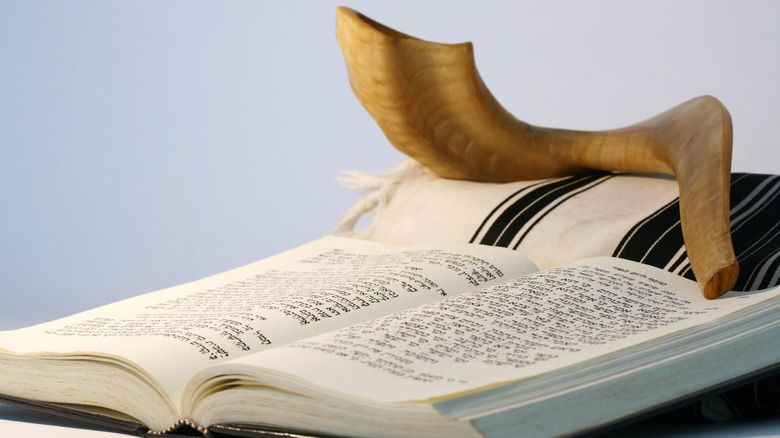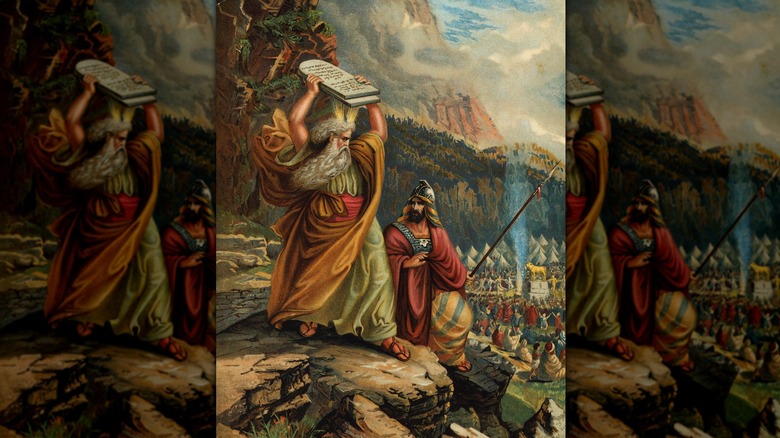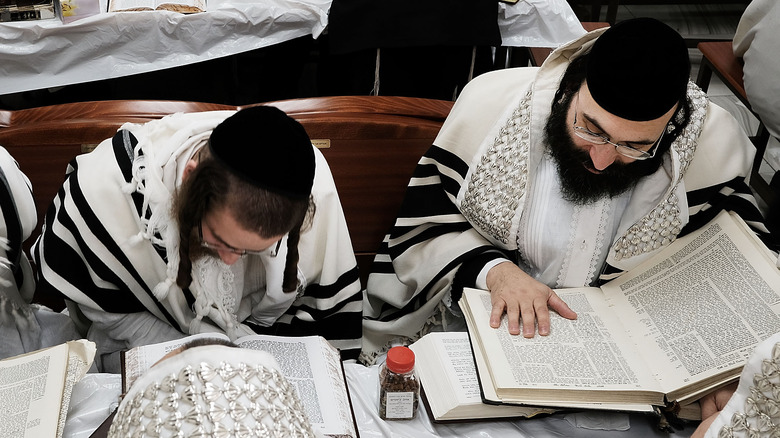Why Yom Kippur Is So Important In The Jewish Faith
Chabad.org refers to the High Holy Days as the "engine" of the Jewish religious calendar. Rosh Hashana, the Day of Judgement, begins the period and hails the new year (falling somewhere in September or October in the Gregorian calendar). It is celebrated on the purported anniversary of the day God created the world and observed for either one or two days, depending on denomination. For 10 days beginning with the holiday, Jewish people are called to do good deeds, make amends, repent for past sins, and pray. This isn't an arbitrary period of self-reflection — the 10 days between Rosh Hashana and Yom Kippur, the Day of Atonement, are when God judges all living things, deciding whether they will live or die in the coming year according to their righteousness.
It's because of its place at the conclusion of the Ten Days of Awe that Yom Kippur is considered the holiest day in Judaism. Many Jewish people who don't observe other traditions still mark Yom Kippur. It's a day that calls for introspection, spiritual renewal, and the forgoing of material distractions — observers are called to a 25-hour fast and abstinence from sex, make-up, bathing, and leather shoes for the more religious. Synagogues plan for additional attendance on Yom Kippur, sometimes renting out additional space, and five services are held from the evening before the holiday to just before sunset on the day, whereupon the fast is ended with a feast of comfort food.
It goes back to Moses and the Golden Calf
Per History, tradition holds that Yom Kippur began after Moses recieved the Ten Commandments atop Mount Sinai. After making his way down he saw his people worshipping a golden calf — a false idol — and destroyed the tablets. When Israel repented of its idolatry, God forgave their sin and replaced the stones of the Ten Commandments that Moses shattered in his wrath. This was said to be on the 10th day of the month of Tishrei, the first in the Jewish calendar, and so became the day of atonement.
Yom Kippur became marked by special services over the years. It was the only time that the high priest of Jerusalem entered the holy of holies, the inner sanctum of the temple and home to the Ark of the Covenant. There, the priest would forego his usual resplendent golden robes, instead wearing simple white after a ritualized bath, per Chabad.org. He would burn incense, use a lottery to choose a sacrifice between two goats (the "loser" was set free), and sprinkle the blood of the sacrifice upon the ark.
This ritual was intended to beseech God on all Israel's behalf for forgiveness, and Yom Kippur made Jerusalem a site of pilgrimage for Jews throughout the region. Following the destruction of the Second Temple in 70 A.D., a modified version of the high priest's service was adopted by local rabbis, and individual worshippers were encouraged to call for God's mercy within themselves.
It's the white holiday
Just as the ancient high priests of Jerusalem wore white when performing their rituals on Yom Kippur, many Jews today mark the holiday by wearing white. Per AJC, it's a visual representation of the spiritual purity and renewal that observers are meant to strive for during the Ten Days of Awe. That many Jews follow this custom together can reinforce the communal aspect of Yom Kippur, as confessions and prayers of atonement are traditionally delivered as plural statements.
Other unique clothing choices for Yom Kippur are part of the holiday's call to set aside luxuries and material comforts while reflecting on sins and souls. The prohibition against leather shoes on Yom Kippur for some denominations comes from the fact that, until recently, such footwear was a luxury item, per Chabad.org. But Yom Kippur isn't entirely given over to solemn prayer and atonement. Its services include songs and dances, and the meal held at the end of the day features such sweet treats as blintzes, stuffed pancakes, and kugels, a baked noodle pudding.


